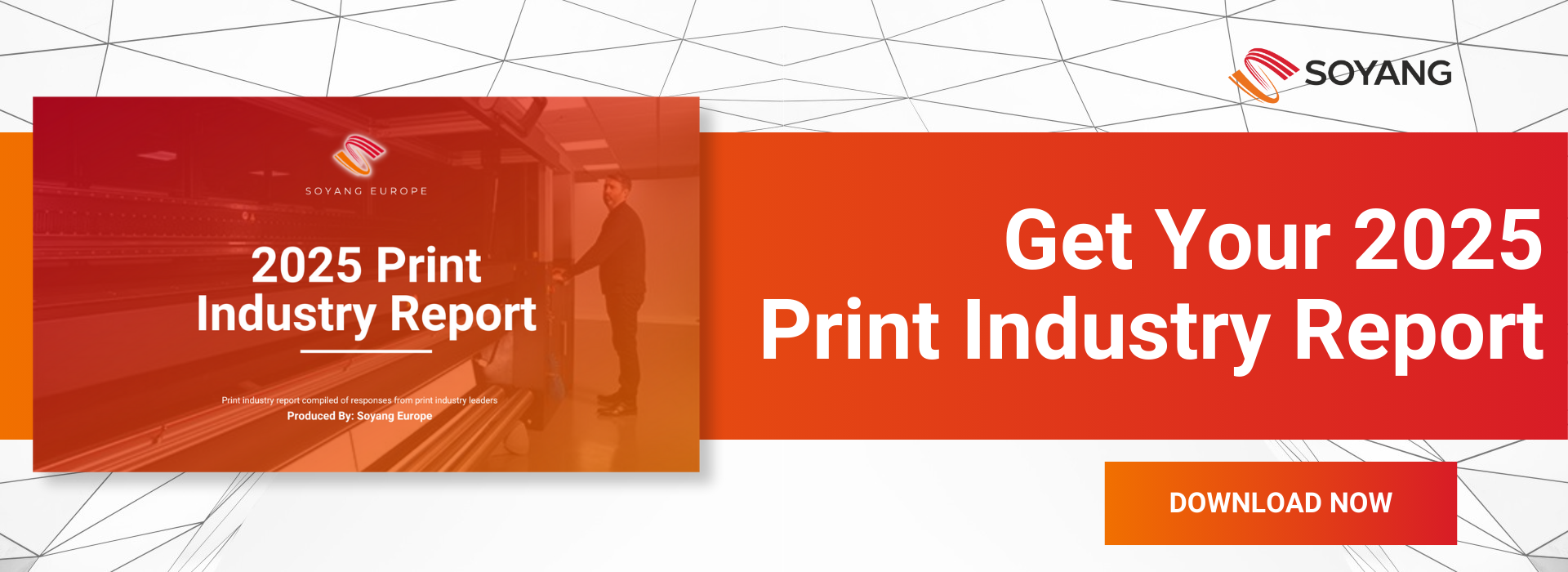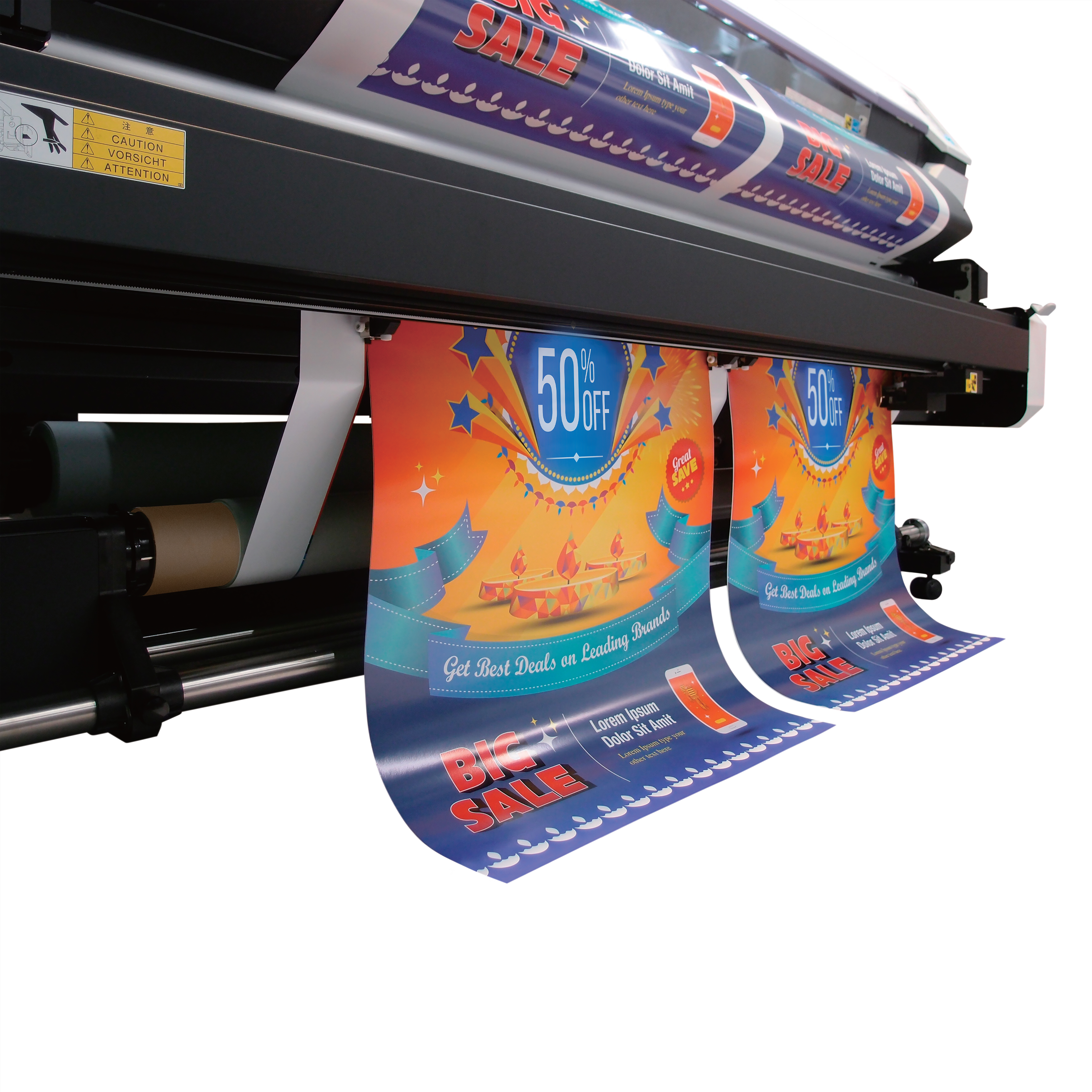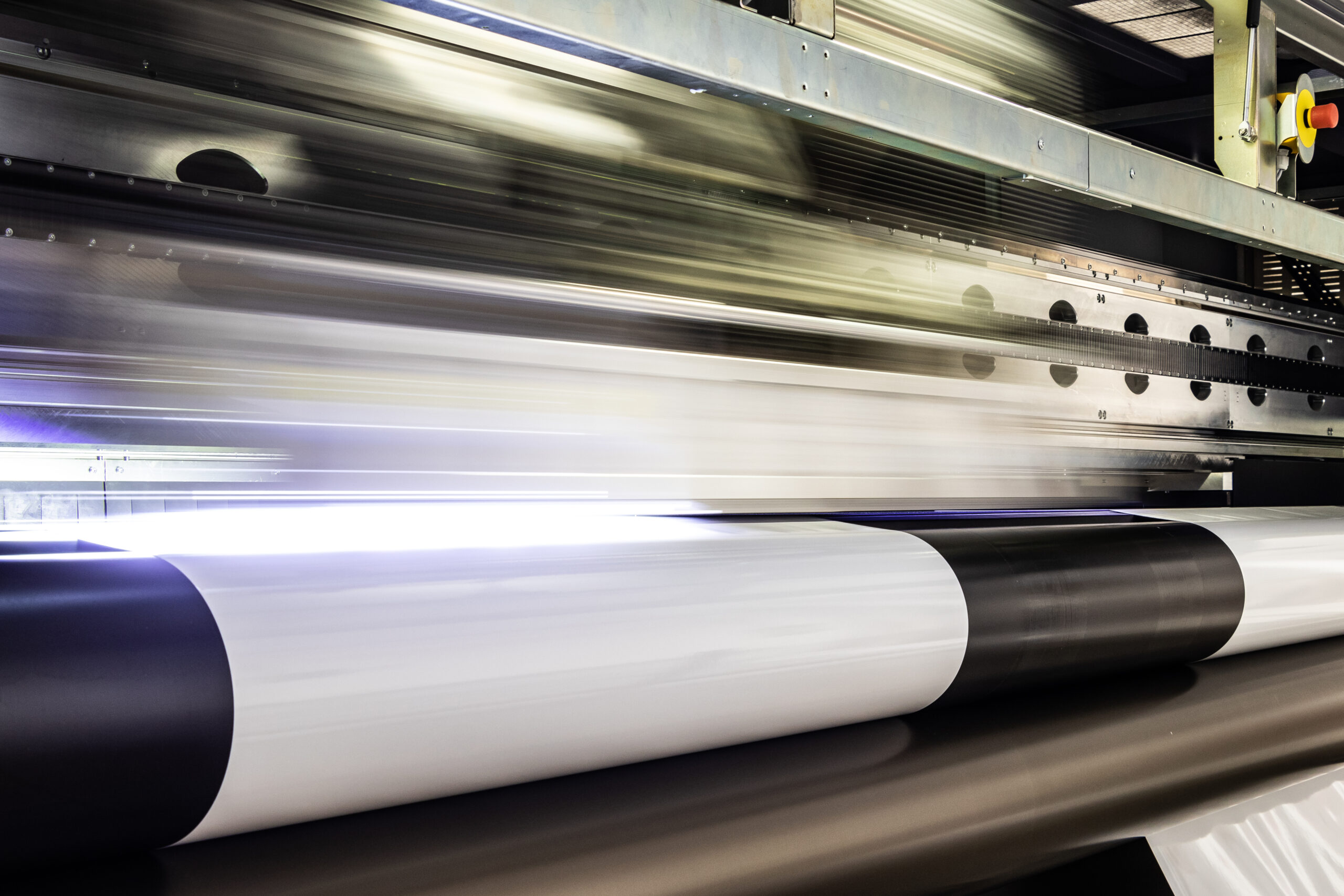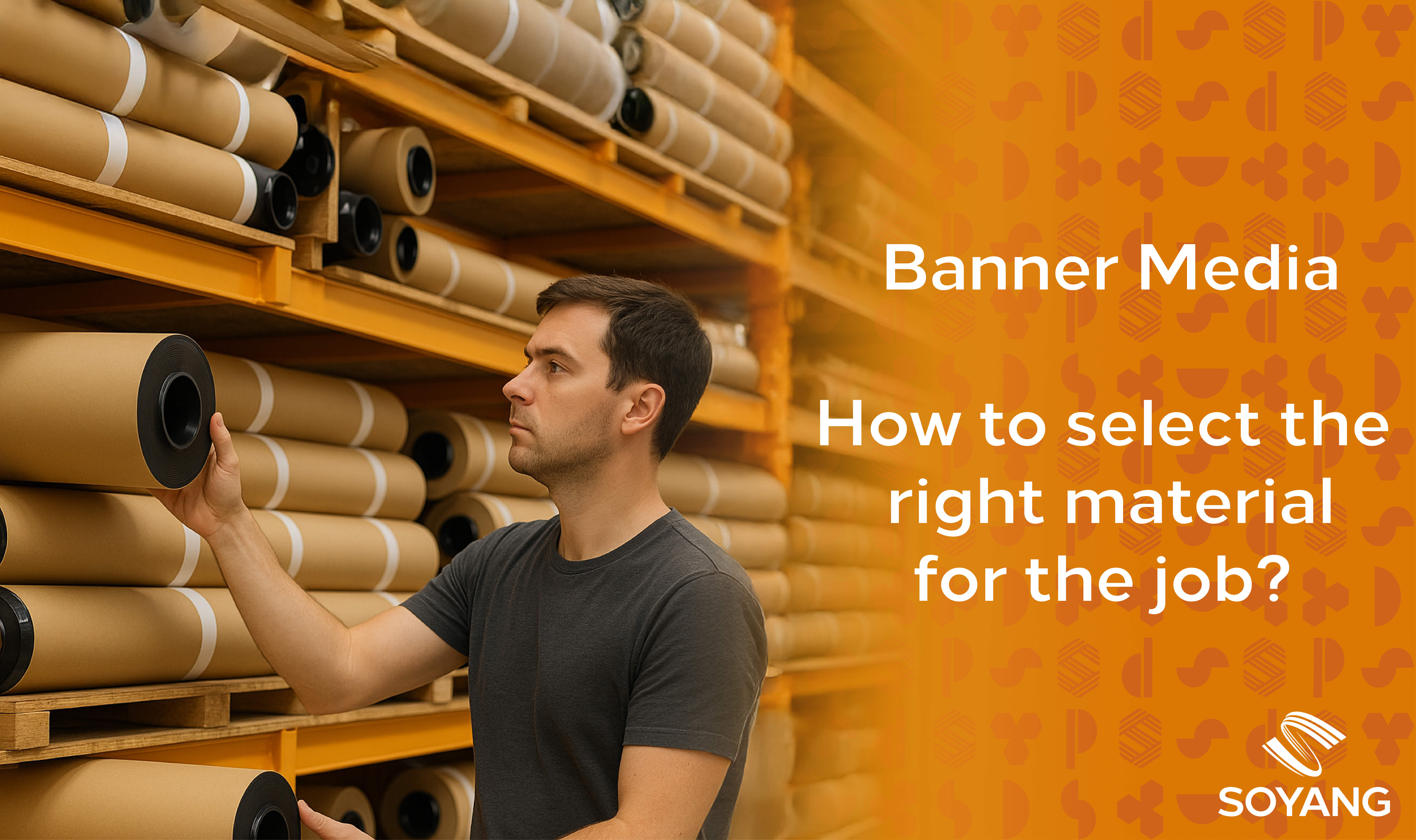What printing industry trends will make the biggest impact on the industry’s future? Soyang looks into its crystal ball.
The future of a printing industry forged by its past
It’s easy to take the printing industry for granted, so here’s something to consider. When we talk about the technological evolution of the human race, we tend to measure it in terms of the journey from one of two key moments: the start of the Industrial Revolution, and the invention of the Printing Press (in 1436 by Johannes Gutenberg, in case you were wondering).
Print has been changing the world ever since. And we imagine that ever since Johannes first worked out that a roomful of monks slaving over manuscripts probably wasn’t the fastest way to spread the word, people have been looking to the future of print.
Industry evolution was slow at first. It wasn’t until the late 19th century that print took its next great leap, with the invention of lithography (or offset printing) which dramatically cut the cost, improved the quality and boosted the consistency of print.
Innovation accelerated rapidly over the following century. But where will it take us next?
On demand in demand
If we look at the shift in our client profile over the past few years, it’s safe to say that the most profound is in the growth of print on demand businesses.
Print on demand gives customers the print they need fast, but that inevitably places greater pressure on the print business and its suppliers to operate in an agile way. Hook everything up in a streamlined way, and on demand means the business needs to carry less stock, which means reduced need for storage, lower operating costs and less waste. Set up times are minimised. Short print runs become much easier to a) do and b) make profitable.
Better still, print on demand enables a print business to adapt its tactics quickly, which makes responding to a changing market much easier. Of all printing industry trends we can expect to shape the next few years, this is perhaps the one likely to have the biggest impact on business.
Intelligent application of AI
It’s not news to announce that AI will play a growing role in print. It’s set to play a growing role in everything. What is perhaps a little more refreshing is that, unlike in many industries, the predictions for AI in print are a little more realistic. Take AI’s role in the future of print industry production, for example.
The suggestion isn’t that AI will take over the world. But it will do things that make print companies more efficient, keep production humming, and remove some of the more laborious tasks.
AI has a big role to play in maintenance optimisation, for example, predicting maintenance needs so there’s less chance of a breakdown when you can least afford it. It’s likely to play a larger role in workflow automation, streamlining workflows in the most efficient way.
And AI has a big role to play in ensuring the quality and consistency of print projects — from clarity and sharpness to colour balancing — is on point.
A sustainable future
Not so long ago, the future of a print industry that relied on lots of natural resources and not very eco-friendly solvents didn’t feel particularly encouraging.
As the world shifted to digital and realised the full extent of the climate emergency, there was a worry that print would be left behind. Of course, that didn’t happen. One of the reasons for that is that print changed.
Now, when we look to the future, print industries can point to the increasing use of water-based inks, the reduction in solvents, the growth in recycled print materials and the way print equipment has changed to optimise energy use.
We’d argue that the world was always going to need physical print. But there’s no doubt that the ongoing efforts to create a more sustainable future is making the decision to use print a much easier one for carbon-conscious clients.
Making print more personal
It’s perhaps more of a data trend than a print one, but as marketing becomes more personal, with evermore granular use of data, so the outcome of that is a shift to printing products featuring not just individual names, but which are personalised with images and text. It’s all part of using print to find new ways to engage in a deeper way with consumers.
Secure print
The future of printing technology is smart. Take security for example. With a digital signature or code printed onto your products and stored in blockchain, end users need only scan the code to verify authenticity.
Already in use in academia (for example, on exam papers), and product labelling, there’s much wider potential in tackling counterfeits.
Erasable ink
Why, in an article on the future of printing technology and processes, are we featuring tech that’s a good ten years old? Well, it’s because erasable print may have been around for a decade, but it’s remained on the fringes.
It certainly sounded like the stuff of spy movies. Print your document and, if you don’t like the results (or you need to hide the results from SPECTRE) run it through the printer again where a heat plate will wipe the ink, leaving you with an almost blank page.
To date, the issue has been that word ‘almost’. The ability to reuse paper up to five times has been somewhat offset by the fact that the erased print wasn’t always entirely invisible, which could lead to some fairly messy looking documents.
As tech improves, however, it’s still possible that erasable print may become part of the future of print, helping to cut waste and costs.
Talk to Soyang
How will the future of the printing industry directly impact you business’ future? To explore how the latest technology and materials could support you, talk to Soyang.










